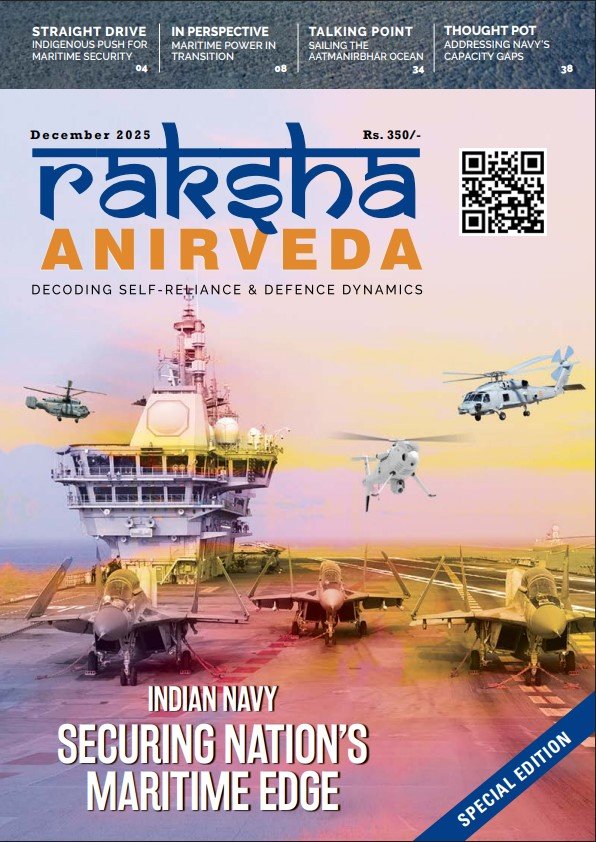In the spring of 1971, the Indian subcontinent teetered on the edge of chaos. The Pakistani military’s brutal crackdown on Bengali civilians during Operation Searchlight — which led to the deaths of 2.6 million Hindus, 400,000 Muslims and the rape of hundreds of thousands of Bengali women and underage girls — galvanised India’s leadership. Prime Minister Indira Gandhi, faced with a humanitarian crisis and a flood of refugees in India, decided that war was inevitable. However, due to the presence of sane heads in the military, the path to victory would not be rushed.
With up to 10 million Bengali refugees from East Pakistan having fled to India, Indira Gandhi summoned the chiefs of the Army, Navy, and Air Force to discuss military options. General Sam Manekshaw, India’s Chief of Army Staff, was asked to prepare for immediate action. He agreed to the plan but resisted the timeline. One of the key reasons for his hesitation came from General J.F.R. Jacob, a Jewish officer and strategist who advised against a hasty invasion of East Pakistan during the monsoon season. Jacob argued that the terrain would be flooded, hampering mobility and jeopardising the success of Indian armoured and infantry units.
The lessons of 1971 are still relevant in dealing with the Pakistan problem. Calls for retribution or war in response to provocations must be tempered by realism and long-term vision. As strategists like Sun Tzu and Chanakya advised more than two millennia ago, the most victories are those won without direct conflict
Manekshaw supported this view and relayed it to Indira Gandhi. Used to her Congress minions kowtowing before her dictatorial ways, she initially reacted with anger. Nevertheless, the army chief firmly stated that if she wanted to lose the war, he could go ahead — but success required waiting until December when the terrain for the Indian Army to launch a blitzkrieg into East Pakistan. Also, by winter the Himalayan passes would be snowed under so the Chinese wouldn’t be able to come to the aid of their Pakistani vassals. Indira Gandhi wisely deferred to military judgement. The result: a swift and decisive victory later that year, which led to the creation of Bangladesh and redefined the geopolitical landscape of the Indian subcontinent.
Why Strategic Delay Still Matters
Fast forward to the present: the lessons of 1971 remain deeply relevant in the context of dealing with the Pakistan problem. Calls for retribution or war in response to provocations must be tempered by realism and long-term vision. As strategists like Sun Tzu and Chanakya advised more than two millennia ago, the most victories are those won without direct conflict.
“The supreme art of war is to subdue the enemy without fighting,” wrote Sun Tzu in the fifth century BCE. “To fight and conquer in all your battles is not supreme excellence; supreme excellence consists of breaking the enemy’s resistance without fighting.”
Chanakya was blunter. In the Arthashastra, written in the fourth century BCE, he stated: “If the end could be achieved by non-military methods, even by methods of intrigue, duplicity and fraud, I would not advocate an armed conflict.”
Modern India, under Prime Minister Narendra Modi, appears to be following this principle — eschewing full-scale war in favour of strategic pressure. A full-scale invasion of Pakistan may satisfy emotions in the short term, but the long-term costs — human, economic and geopolitical — could be catastrophic. In an all-out war lasting two weeks, India can expect at least 10,000 casualties. And these would be India’s bravest. War should thus be an option of last resort.
Despite its weaknesses, Pakistan remains a nuclear-armed state. Any miscalculation by India could lead to irreversible consequences, even if India’s conventional forces are vastly superior. Therefore, caution and calculation remain critical. Not a single Indian city should be risked — even if total destruction of the enemy appears feasible
Hidden Power of Mobilisation
Even without engaging in war, mobilisation itself can serve as a potent tool. For a piss-poor and resource-strapped country like Pakistan, the cost of maintaining military readiness — fuel, food, logistics — during high alerts significantly drains its already fragile economy. Funds that could go towards development, healthcare, or public infrastructure are instead diverted to sustain the military machine.
This economic burden is magnified by Pakistan’s internal issues: hunger, energy shortages and weak infrastructure. Mobilisation creates additional pressure without firing a single bullet.
Conversely, India gains from such preparation. Mobilisation reveals flaws in logistics, equipment and doctrine — insights that are invaluable before the actual conflict. The Kargil War of 1999 exposed India’s lack of proper cold-weather gear and precision-targeting tools. For instance, with the shoddy INSAS rifle jamming up in the Himalayas, India had to place an order for 66,000 Kalashnikovs on an emergency basis. You can bet the seller extracted the highest amount possible, knowing India’s predicament. Such gaps, when discovered in peacetime mobilisation, can be corrected well before actual hostilities.
Morale, Corruption and a Crumbling Adversary
While Indian forces benefit from structured incentives and strong morale, Pakistan’s military is increasingly plagued by internal corruption. Promotion is driven not just by merit, but often by connections and unethical practices. Allegations of abuse, exploitation, and scandal further weaken morale. A tragic case recently surfaced involving a young Pakistani officer who took his life after being raped by his superiors — his suicide note expressing hope that the Indian Army or Baloch freedom fighters would one day hold his abusers accountable.
India’s restraint is not a sign of weakness. Slow and steady diplomatic, economic and strategic measures are gradually eroding Pakistan’s ability to threaten regional peace. As Pakistan continues to struggle under internal instability, economic collapse and dwindling international support, its options are narrowing
Moreover, the Pakistan Army’s entanglement in commercial ventures — ranging from bakeries to real estate and insurance — means that war disrupts its profitable sidelines. In such an environment, actual combat becomes an afterthought, relegated to religious rhetoric rather than strategic readiness. Warfighting is left to the Pakistan public (Jehad) and extra-terrestrial intervention. After all, Allah created Pakistan and it will – or it must – save the Islamic Republic.
Nuclear Deterrence and Measured Strategy
This doesn’t mean we should take Pakistan lightly. Despite its economic and military weaknesses, Pakistan remains a nuclear-armed state. Any miscalculation by India could lead to irreversible consequences, even if India’s conventional forces are vastly superior. Therefore, caution and calculation remain critical. Not a single Indian city should be risked — even if the destruction of the enemy appears feasible.
India’s restraint is not a sign of weakness but of controlled dominance. Slow and steady diplomatic, economic and strategic measures are gradually eroding Pakistan’s ability to threaten regional peace. As Pakistan continues to struggle under internal instability, economic collapse and dwindling international support, its options are narrowing.
Endgame
India’s long-standing doctrine of strategic restraint, combined with tactical preparedness, remains its strongest asset. Rather than seeking a costly all-out war, the Indian leadership understands the value of patience, attrition and psychological warfare. Just as in 1971, military action must serve policy — not passion.
If the lessons of history are heeded, India can neutralise threats without major sacrifices — ensuring stability not only for itself but for the entire region.
–The writer is a globally cited defence analyst based in New Zealand. The views expressed are of the writer and do not necessarily reflect the views of Raksha Anirveda






